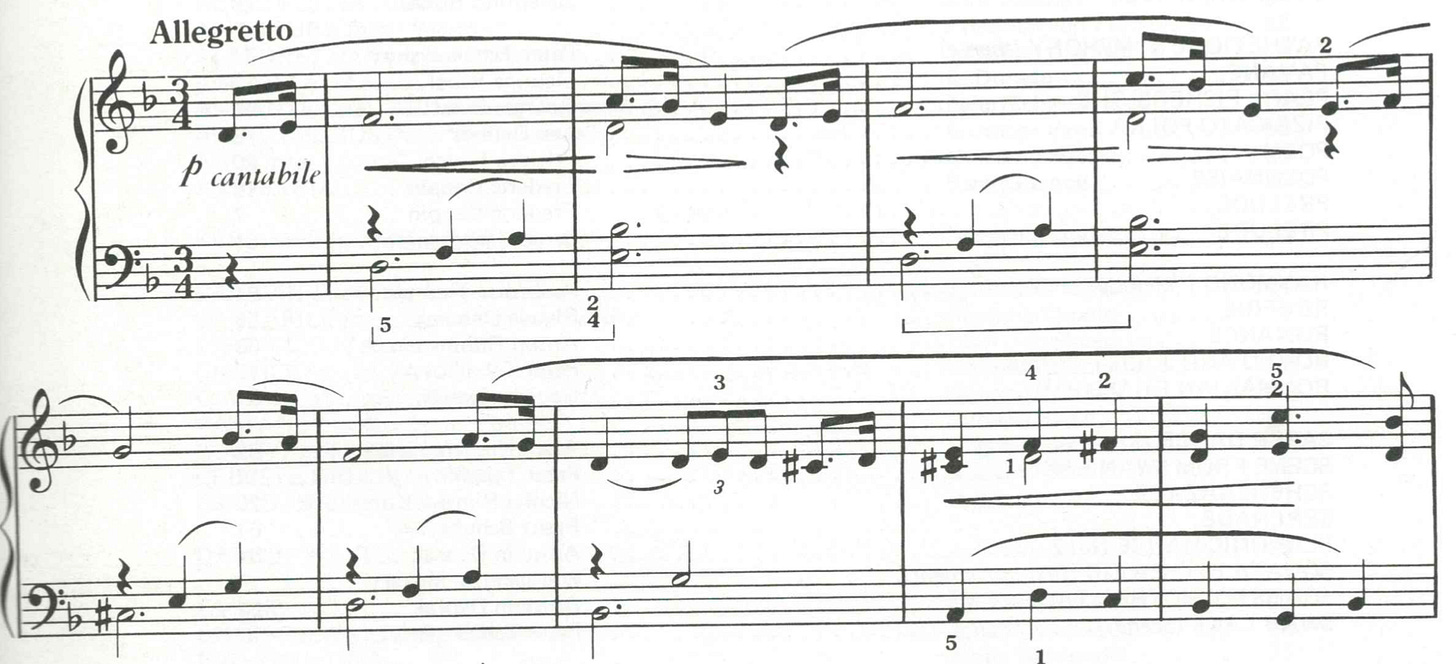Here are some of my favourite moments from the Allegretto in his 3rd Symphony in a piano reduction.
In this phrase, we hear the iv minor chord going to the V, nothing interesting on the face of it, however the iv minor chord is in first inversion, putting the third in the bass. This creates an interesting move in the bass line, a semitone which is a small dissonant interval which in the context adds to the sense of sadness that is in the piece.
This device is an absolute cliché, but for good reason. In the example above, we have - from the second beat - Dm (i minor) going to the A7 (V chord) but most important for this device, the Dm has its 5th in the bass. Let me just quickly write the notes of these chords:
Dm = D F A
A7 = A C# E G
The 5th of the Dm chord is the same of the root note or the 1st of the A7 chord. By keeping the same note in the bass as the harmony changes above, it creates a sense of continuity.
This is another favourite device of mine. It creates such a grand sound as the melody moves upwards and the bass line descends. The chords are Dm - D7/C - Gm/Bb. I love the sound of secondary dominants, or any chords that leave the original key in order to produce a surprising moment in the music. In this case, the D7 is not in the key (D minor). However, it is the V chord of Gm, so even though the D7 is surprising when heard, the chord to which it resolves, is not. The listener’s ear is being tricked a little here as the chord could be heard as Gm (the first chord of the key of Gm) or as the iv minor chord of the original key (D minor).
The last point is to notice that the first three note motif is used as a vehicle for the melody throughout the piece. I want you to notice the right hand only. We have the first three notes as a question, which is answered in the next bar, then the first question is asked again, but this time with a different answer (albeit with the same rhythm). Then the original question is asked a third time but starting a tone higher (E rather than D). The phrase that answers the final question becomes a sequence (a pattern moving up or down) resolving in the 7th bar. Great melodies can be written from a humble few notes, the repetition makes it easy to understand and therefore remember, and our brains are pattern recognition machines and feel at ease with order rather than chaos.
I always try to keep this in mind when writing melodies. I often find myself writing what it is really the beginnings of several melodies, instead of focusing and developing one. When writing your own melodies, ask yourself after a few bars if this is connected to what you started with. Of course, sometimes we want reckless abandon, but this should be a creative choice, and not an oversight.
Warm Regards




